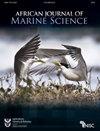Variation of the relationships between lengths and weights applied to 123 fish species observed at Réunion Island (Indian Ocean)
IF 1.4
4区 生物学
Q3 MARINE & FRESHWATER BIOLOGY
引用次数: 0
Abstract
Body length–weight (L–W) relationships of 123 fish species (122 Actinopterygii and 1 Elasmobranchii) were studied from 10 218 individuals caught around Réunion Island from 2000 to 2021. All species, except for 4 with a very small number of individuals and limited length range, showed a significant relationship between total length and total weight. For 52 species, the data showed the body becoming more elongated (i.e. b < 3.0) over their lifespan, while for 63 species the individuals became thicker (i.e. b > 3.0); only 4 species had a b-value equal to 3.0, signifying isometric growth. Of 72 species for which macroscopic observation allowed identification of sex, there was sexual dimorphism for only 9 species (12.5%), with a significant difference between the slopes of the length–weight relationships. Temporal effects were also investigated, using the annual component of time of capture for 75 species and the seasonal component for 73 species. A temporal effect was significant for 27 species (36.0%) when the sampling year was taken into account, and for 14 species (19.2%) when the sampling quarter (season) was taken into account. Finally, among 120 species tested, the relationship between total length and standard length was significant, and among 114 species the relationship between total weight and gutted (eviscerated) weight was significant.在印度洋r union岛观测到的123种鱼类的长度和重量关系的变化
本文对2000 - 2021年在r union岛捕获的10218条鱼进行了体长-体重(L-W)关系的研究,其中123种为放线鱼科122种,板鳃鱼科1种。除个体数量极少、体长范围有限的4种外,其余物种的体长与总重呈显著相关。数据显示,52个物种的身体在其一生中变得越来越长(即b < 3.0),而63个物种的个体变得更厚(即b > 3.0);只有4种的b值为3.0,表示等长生长。在72种可通过宏观观察确定性别的物种中,只有9种(12.5%)存在性别二态性,且长度-权重关系的斜率差异显著。利用捕获时间的年分量和季节分量分别对75种和73种进行了时间效应研究。考虑采样年和季(季)时,时间效应显著的有27种(36.0%)和14种(19.2%)。结果表明,120种的总体长与标准体长呈显著相关,114种的总重与去内脏重呈显著相关。
本文章由计算机程序翻译,如有差异,请以英文原文为准。
求助全文
约1分钟内获得全文
求助全文
来源期刊

African Journal of Marine Science
生物-海洋与淡水生物学
CiteScore
2.60
自引率
16.70%
发文量
17
审稿时长
6-12 weeks
期刊介绍:
The African (formerly South African) Journal of Marine Science provides an international forum for the publication of original scientific contributions or critical reviews, involving oceanic, shelf or estuarine waters, inclusive of oceanography, studies of organisms and their habitats, and aquaculture. Papers on the conservation and management of living resources, relevant social science and governance, or new techniques, are all welcomed, as are those that integrate different disciplines. Priority will be given to rigorous, question-driven research, rather than descriptive research. Contributions from African waters, including the Southern Ocean, are particularly encouraged, although not to the exclusion of those from elsewhere that have relevance to the African context. Submissions may take the form of a paper or a short communication. The journal aims to achieve a balanced representation of subject areas but also publishes proceedings of symposia in dedicated issues, as well as guest-edited suites on thematic topics in regular issues.
 求助内容:
求助内容: 应助结果提醒方式:
应助结果提醒方式:


